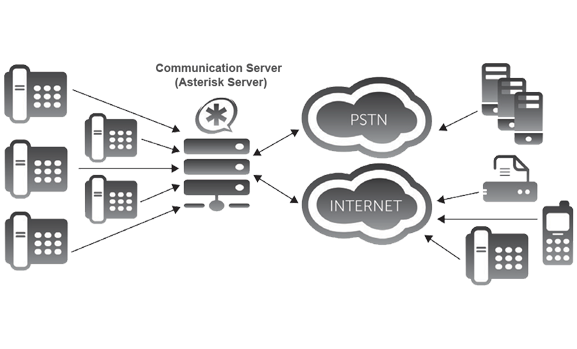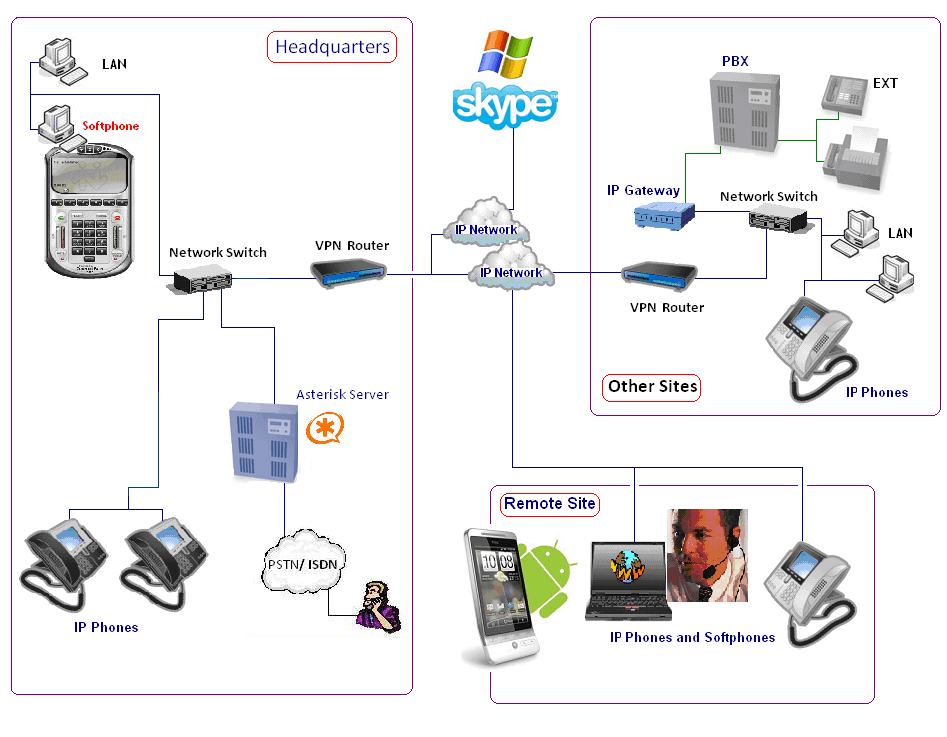Introduction:
In today’s fast-paced business environment, successful communication is crucial for success. One innovation that has revolutionized communication systems is Asterisk. Asterisk, an open-source system, gives a flexible and adaptable solution for building feature-rich communication servers. In this article, we will investigate the control of Asterisk by delving into its installation handle, the significance of master back, and the benefits of proactive server monitoring.
Asterisk Installation: Building a Solid Foundation:
The installation of Asterisk shapes the backbone of a dependable communication server. It involves setting up the necessary hardware and designing the software to ensure ideal execution. When installing Bullet, it is essential to consider factors such as hardware requirements, working system compatibility, and available installation methods. By taking after the recommended installation strategies, organizations can make a strong foundation for their Mark deployment.
To install Asterisk, begin by selecting the fitting hardware to support the anticipated call volume and required features. This involves choosing a server with adequate processing control, memory, and storage. Also, it is crucial to choose a compatible working system and ensure that the essential conditions are met.
The installation process can shift depending on the chosen method. Asterisk can be installed utilizing bundles given by popular Linux distributions, or it can be compiled from source code for more progressed customization. Each installation strategy has its possess advantages and contemplations, and the article will explore the steps included in both approaches.
Appropriate arrangement of Asterisk is key to unleashing its control. This includes defining communication endpoints, setting up dial plans, and arranging security features. By following best practices and considering organizational necessities, businesses can optimize their Asterisk installation for consistent communication.

Asterisk Server Support: Harnessing Expertise for Smooth Operations:
Once Asterisk is installed, ongoing back is crucial to ensure smooth operations. Expert support gives organizations with access to knowledgeable professionals who can assist in various aspects of managing and maintaining an Asterisk server. From initial setup and setup to troubleshooting and resolving issues, back services play a vital part in minimizing downtime and maximizing framework efficiency.
Asterisk server support can be obtained through different channels. The Asterisk community offers online forums and mailing lists where clients can seek help from individual community members. Additionally, proficient services are accessible from vendors and consultants specializing in Asterisk deployments. These services may incorporate installation help, configuration audits, and custom advancement.
For organizations requiring a higher level of back, managed services are an option. Managed benefit providers take care of the day-to-day management of the Asterisk server, counting monitoring, maintenance, and upgrades. This allows businesses to center on their core activities whereas relying on experts to ensure the smooth operation of their communication system.
By harnessing Asterisk server support, organizations can benefit from the information and experience of experts who can direct them through complex scenarios, give timely resolutions to issues, and offer proposals for optimizing performance.

Asterisk Server Monitoring: Proactive Management for Optimal Performance:
Proactive server monitoring is vital for maintaining a reliable and proficient Asterisk communication system. Checking involves continuously following the server’s performance, call quality, and resource utilization to identify potential issues before they influence users.
Effective monitoring strategies for Asterisk include utilizing monitoring tools that give real-time insights into the system’s health. These tools can track metrics such as CPU and memory usage, call volume, arrange activity, and response times. By setting up alerts and notifications based on predefined edges, administrators can be promptly informed of any deviations from ordinary operation.
Monitoring moreover includes following call quality metrics such as jitter, packet loss, and latency. This data helps recognize network or configuration issues that could impact call clarity and overall client experience. By monitoring call quality, administrators can take proactive steps to address any potential issues and ensure consistent and reliable communication.
Moreover, observing can give valuable data for capacity planning and optimization. By analyzing trends and usage designs, administrators can identify potential bottlenecks and arrange for future growth. This proactive approach helps organizations remain ahead of their communication needs and ensures that the Asterisk server performs ideally at all times.
Best Practices for Asterisk Installation, Support, and Monitoring:
To ensure a successful Asterisk arrangement, it is important to follow industry best practices. This area of the article will cover a range of best practices related to Asterisk installation, back, and checking.
Hardware selection: Choose hardware that meets the expected call volume and consider redundancy options for high availability.
Software setup: Follow recommended guidelines for configuring Asterisk, including security settings, dial plan design, and module determination.
Regular overhauls: Keep the Asterisk software and related modules up to date to benefit from bug fixes, security patches, and modern features.
Backup and recovery: Execute regular backups of the Asterisk setup and important data to ensure speedy recovery in case of system disappointments.
Security measures: Apply industry-standard security practices, such as strong passwords, firewall rules, encryption, and intrusion location systems, to ensure the Asterisk server from unauthorized access and assaults.
Documentation: Maintain detailed documentation of the Asterisk installation, setup, and any modifications made, ensuring simple reference and troubleshooting within the future.
Conclusion:
Unlocking the power of Asterisk requires a holistic approach that covers installation, back, and monitoring. By following best practices and leveraging expert help, organizations can build reliable and feature-rich communication servers. Proactive monitoring ensures ideal performance and enables timely interventions. With Asterisk support, organizations can enhance their communication capabilities and tailor the system to their specific needs. By implementing these strategies, businesses can open the genuine potential of Asterisk and remain ahead in the ever-evolving world of communication technology.
Leveraging Open Source in ICT